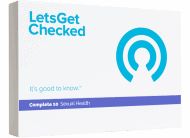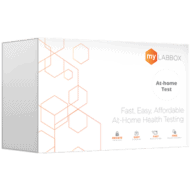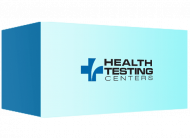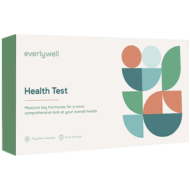What Are At-Home STD Test Kits?
At-home STD test kits offer you a private way to find out about your sexual health status. If you don’t want to discuss your concerns about your sexual health with anyone (not even a doctor), then this is the route to take. Even the packaging of the kit protects your identity.
You don’t have to speak to anyone. All you have to do is collect your DNA sample within the comfort of your own home and send it back to the lab. That’s it! You won’t have to mention anything about your sexual history to a doctor, commute to a doctor’s office or clinic, or even worry about how you can afford the test (as most of them are very affordable).
The method for collecting your DNA sample varies depending on what’s being tested for, but the process is always straightforward. You can safely and discreetly get reliably accurate test results without EVER having to worry about your anonymity.
How Does an STD Kit Work?
Every STD test kit provider is at least a little different in one way or another, but the process of confidentially getting accurate test results is basically the same for each one.
Ordering Your Kit
The kit will arrive at your home in discreet packaging, without any indication of what’s in the box.
Depending on the test kit provider, you can either order over the phone or online. While certain providers may or may not accept insurance or use PayPal, you’ll always have the option of paying with your credit card.
All you have to do is browse through the company’s list of available STD tests, select the one that’s right for you, and wait for it to arrive at your home. Read the details for services to see how long it’ll take you to receive a kit
Collecting a Sample
The collection method for your sample depends on the type of at-home STD test you want. These include:
- Blood (finger prick)
- Urine
- Genital Swab
- Rectal Swab
- Oral Swab
Receiving Your Results
Due to HIPAA compliance in the US, there are restrictions on how you receive your test results. You won’t be able to get your test results over the phone or through email.
Rather, you’ll get an email notification when your results are ready. There will be a link in that email that’ll take you to your personal account with the kit provider. After clicking on the link, all you have to do is log in to your account on the provider’s website to securely view your results.
At-home STD kits provide easy-to-read results. It’ll be a simple matter of “positive” or “negative.”
Follow-up With a Professional
If you have any questions after receiving your STD test results (especially if you test positive for anything), you should always speak with a trusted, healthcare professional.
Ideally, this would be your primary care physician, as they know the ins-and-outs of your medical profile, and can advise you on the next step.
However, depending on the STD test kit you opt for, you’ll have the option to speak with a licensed healthcare professional through the provider.
For example, if you order an STD bundle or single test from Health Testing Centers (Labcorp and Quest Diagnostics orders only), you can speak with one of its associated doctors for free if you test positive for any of the following:
- Chlamydia
- Gonorrhea
- Trichomoniasis
- HSV type 2
Similar services are offered by:
- Personalabs
- Everlywell
- myLAB Box
- STDcheck
- LetsGetChecked (although you’ll be speaking with a nurse and not a doctor)
Which STDs Can At-Home Kits Test For?
There are more than 25 different STDs. Direct-to-customer test kits will give you results for about 6-12 of these diseases and/or infections, including:
- HIV
- HSV 2
- HCV
- Syphilis
- Chlamydia
- Gonorrhea
- Trichomoniasis
- Mycoplasma
- Ureaplasma
- High-Risk HPV infections
How Accurate are STD Tests Taken At Home?
The accuracy of an STD test depends on several important variables, including but not limited to:
- The disease being tested for
- Whether or not the DNA sample has been corrupted in some way
- The time the test is performed
- Whether or not you’ve correctly followed the instructions in the kit
That said, however, modern STD testing techniques are vastly more accurate than they were just a few years ago. So, you can reasonably expect that your test results will be more than 90% accurate.
However, there’s always the possibility of false negatives and/or false positives when you get your report. A false positive happens when your report says that you have a disease when you actually don’t, and a false negative is when your results show that you don’t have a disease when you really do.
If you have any doubts or questions, you should speak with a health care provider.
Why Choose an At-Home STD Test?
Aside from providing quick, reliably accurate results about your sexual health, at-home STD tests protect your privacy, which you could never put a price on.
Perhaps you just don’t feel at ease with talking to a doctor about your sex life, which is completely understandable. Having a conversation with anyone about something as sensitive and personal as your sexual health can be very uncomfortable. But you won’t have this problem with an at-home STD test kit.
Everything you need to do is done in the privacy of your own home, and there’s no need to discuss the details of your sexual health with any other person.
Everything from ordering to shipping is entirely discreet. Your kit will arrive at your home without any indication of what’s inside, so your anonymity will always be safe. And once your results are ready, you can view your report on your personal, secured online account. Not even the lab will know your name — only the results from the test performed.













